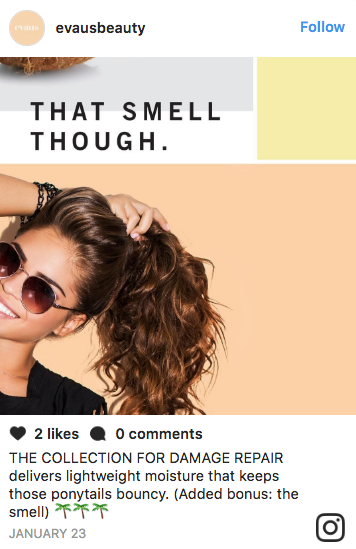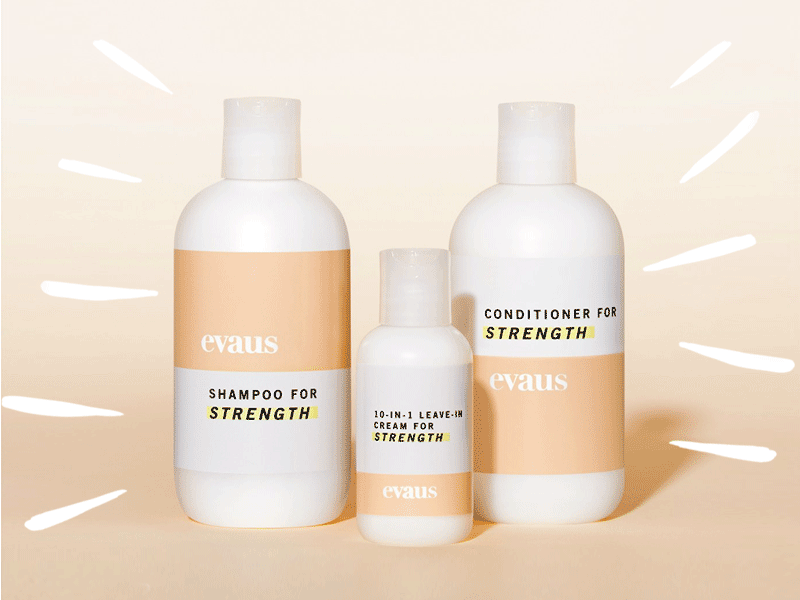Does This 'Millennial' Packaging Make You Want to Buy Shampoo?
By Deanna Pai. Photos: Courtesy of Brand, Instagram, Emily Kemp.
The other week, there was a discussion on the Makeup Rehab subreddit about "brands that not only sell makeup but also sell aesthetic." One Reddit user wrote about her attempt to figure out whether she was tempted to buy brow gel or concealer because she actually needed it—or because she was just into the "glowy, simple girl" lifestyle. She also made the strategic observation that no one would know what brand she was wearing unless they asked.
It's easy to identify with this. After all, how many times have you considered buying something for the packaging alone—beauty product or not? The aesthetic is a big factor in the success of Millennial-friendly brands like Glossier and Milk Makeup. Recently, an entire Racked.com article was devoted to an Insta-friendly hand cream. A quick glance at their respective Instagram feeds shows a blur of pretty pastels and fresh-faced people who look like they rolled out of bed with preternaturally amazing skin (and actually might have—who knows?).
The whole vibe—and, therefore, the beauty products being sold—convey an effortless cool that seems just attainable enough. You know: "Glowy, simple girl." "Even if I didn't like their products, they just look good in photos, in my bathroom, and on my vanity," says one friend when I ask her about Glossier. On top of that, a minimalist appearance common with these brands conveys a sort of innocence. "Austere packaging is more of an anti-big business cue than just luxury," says Kit Yarrow, Ph.D., a consumer psychologist and professor at Golden Gate University in San Francisco. "It's about purity and trust." An absence of overt messaging on the bottle makes you think the brand has your best interests, not theirs, in mind.
It's for this effortless-cool lifestyle (and the natural beauty that goes along with it) that people are willing to pay because what the accompanying visuals imply is that if you fall asleep with a certain serum, you will wake up looking like a well-rested, manic-pixie-dream-girl version of yourself. "Actually—and ironically—people aren't really interested in a new brand form or flavor as much as they are interested in how a brand can change, impact, or improve their lives," explains branding expert Debbie Millman, author and chair of the graduate branding program at the School of Visual Arts. "They want brands around them that make them feel special and provide some social cache or confidence."
The packaging is an extension of that. "The packaging is the first interaction you have with a personal care product, and it's often the reason you buy it the first time," explains Karen Young, founder of marketing agency Y Group and a former marketing exec at Lancôme and Estée Lauder. "Today—given the power of social media—if a product is 'Instagrammable,' that may be enough to help build the brand. If the packaging looks great and also contributes to the function of the product, it's a double win." She cites EOS lip balm as an example of the power of packaging. Everyone said it wouldn't sell—it was clunky, it wouldn't fit into the pocket of your jeans—but it became a hit regardless, thanks to the cute packaging.
In the beauty realm, this aesthetic can often come at a price. But it doesn't necessarily make them better than cheaper formulas—which is the point that hair care brand Evaus Beauty is trying to make.
Evaus Beauty looks and seems like your ideal Millennial beauty bait. The bottle designs are a combination of white and a soft peach reminiscent of Millennial pink, and the font is simple and plain. The packaging is so minimalist, in fact, that it looks as though Marie Kondo worked her life-changing magic on it. Even Evaus's Instagram feed is the perfect example of the "glowy, simple girl" vibe that appeals to just about everyone.
Before you start clicking around, trying to figure out where you can find Evaus Beauty for yourself, we'll just tell you: Evaus is Suave. (Hint: Evaus is Suave spelled backward.) Yes, it's the OG drugstore brand that's been around since forever. To prove this bias, Evaus invited influencers to test the new product and give them their feedback—all of which was positive—at what they believed was a casting call. It was only then that the influencers discovered they'd been using Suave products all along.
The products they used were matched to their hair types (and are all existing Suave hair care formulas). "All of them had a chance to try it, then opt in if they were pleased with the results and wanted to attach their names to [the brand]," explains Jen Bremner, director of marketing at Unilever (the company that owns Suave). All of the influencers involved in this project had nothing but praise for the Evaus-but-really-Suave products, which up-ends the common assumption that a beauty product that costs more—and looks the part—works better than its budget-friendly counterparts.
Blame it on Veblen's economic theory. "Beauty products fall under this theory: The more it costs, the better it must be," says Young. "We want to believe that the expensive cream we just purchased will do more to improve our skin than the inexpensive, drugstore version." Part of Veblen's theory also connects the purchase in question to your social standing. Read: Getting your hands on a more #need beauty product will score you social capital, which these days translates to more likes and followers. Plus, that larger price tag subliminally tells shoppers that the product is worth your time and attention, according to Young.
Evaus Beauty isn't actually going to go into production. Rather, Suave wanted to prove a point, and they did. But it's hard to stand out without the packaging edge, especially when it comes to hair care. "The hair category is so competitive since it has about 10,000 SKUs," says Young. "It's a hard product to 'test' in stores, so shoppers are relying on other cues—and the packaging is certainly one of them." Still, a campaign like this reveals that it's our implicit bias that makes us choose a visually pleasing product—even at higher price—over one that works just as well, if not better, and for a bargain. "'Money' is never about money," says Millman. "It's an intellectual exchange for something that you believe will make you feel better." Once you're aware of that, you can purchase the best beauty products for you and your budget.
Of course, if you love decking out your shower and bathroom with gorgeous-looking products, have at it. There's absolutely nothing wrong liking pretty things, and there are great brands (like Glossier and Milk Makeup) that are both luxe-looking and affordable. Just keep in mind that sometimes you may be paying for the packaging and not necessarily what's inside it. And, even once you get to try the latest launches for yourself and feel extra cool for it, that novelty fades fast. "Humans metabolize their purchases very quickly, even if it seemed worth it for any number of reasons when you first bought it," explains Millman. "After some time passes, people will go back to feeling the baseline feelings they had previously felt about themselves, no matter how shiny the object, the hair, or the experience."
A clever ad campaign or dreamy Instagram shot might make you think a new product will turn you into the best version of yourself, but it won't last. One redditor summed it up perfectly when she wrote: "They cost so much not because you truly need to pay that much for a quality product, but for the packaging and exclusivity that come with the brand."
Still, is it wrong we're a little sad we can't have our Suave in these bottles too?
This story originally appeared on Glamour.
More from Glamour:
What's That Salad the Kardashians Are Always Eating on Their Show?
A Look at the Emmy It Girls of the Past 20 Years: Taraji P. Henson, Tina Fey, and More
Major Skin Mistakes You're Making in Your 20s, 30s, and 40s


